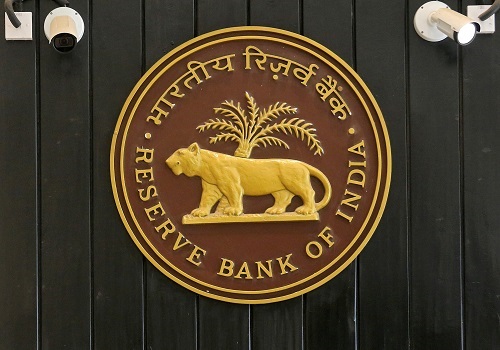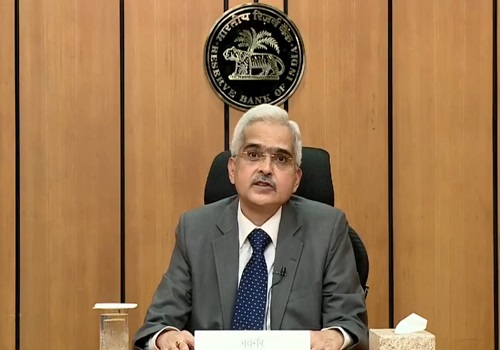Fixed Income Monthly Outlook – March 2022 By Pankaj Pathak, Quantum Mutual Fund

Follow us Now on Telegram ! Get daily 10 - 12 important updates on Business, Finance and Investment. Join our Telegram Channel
Below are Views On Fixed Income Monthly Outlook – March 2022 by Pankaj Pathak - Fund Manager - Fixed Income, Quantum Mutual Fund
Highlights :
Fixed Income View – March 2022
Bond market has been on a roller coaster ride in 2022 so far. The 10-year government bond yield which was hovering around 6.35% during December 2021, spiked to 6.95% (on February 4, 2022) in the aftermath of Union Budget; and is currently trading around 6.80% (March 2, 2022).
The selling in the bond marketcan be attributed to -
- hawkish US FED policy projecting series of rate hikes and liquidityreduction
- rising crude oil and other commodity prices
- higher than expectedfiscal deficit and market borrowings by the Central Government
To start with, we expected bond yields to rise gradually with the RBI pursuing a normalization of the monetary policy by reducing the liquidity surplus and hiking interest rates.
Interest rates/bond yields did move up. While the RBI held the policy rates unchanged and delivered an ultra-dovish policy statement indicating continuation of the current easy monetary policy regime for a longer period.
This provided a shy of relief to the ailing bond markets but failed to make any notable impact on the weak investor sentiment. Clearly, the domestic monetary policy has taken a backseat amidst all the chaos on the global front.
The ongoing war between the Russia and Ukraine has added another layer of uncertaintyin the market.Its direct impact is visible in the fast-spiraling crude oil prices which has already risen by ~39% since start of this year and currently trading above USD 110 per barrel.
Russia plays an outsized role in the global oil market. It is the largest exporter of oil in the worldaccounting for almost 13% of total world oil exports. Thus, a prolonged war or stricter economic sanctions on Russian energy and financial sectors could put significant upward pressure on crude oil prices.
India imports more than 85% of its total crude oil consumption. This makes the Indian economy and the Indian bond markets vulnerable to an oil price shock.
With rising crude oil prices, imports bills will rise putting pressure on the current account balance. It also fuels inflation and dents the governmentbalance sheet by increased fuel subsidy or revenue loss in case of fuel tax cut.
For every US$ 10/bbl increase in the crude oil price, import bill increases by US$ 20 billion and the current account deficit widens by ~0.4% of GDP.If this passed on to domestic petrol and diesel prices completely, it can increase the consumer price inflation by 40-50 basis points over the period.
From the bond market’s perspective, this is a bad macro setup. If crude oil price continues to rise, we should expect bond yields to move higher despite the continuation of easy monetary policy.
The RBI itself has not factored in this high crude oil prices in their inflation and growth forecasts while framing the monetary policy. If oil prices sustain where they are now, the RBI will find it difficult to maintain an accommodative monetary policy.
Thus, crude oil price remains the biggest risk for the Indian bond markets.
Going ahead the bond market will also respond to the domestic demand supply situation which has worsened significantly due to elevated market borrowings by the government.
The central government has pegged its gross market borrowing in FY 2022-23 at Rs. 14.95 trillion vs 10.46 trillion in FY22. To recall, the government borrowing was around Rs. 7.1 trillion in FY20(before the pandemic) which jumped to Rs. 12.6 trillion in FY21. The point to note here is that government borrowing has more than doubled in the last three years. It is already much higher than natural market appetite.
Notwithstanding this fact, the bond market was well behaved in the last two years due to – (1) easy monetary policy and increasing liquidity surplus, (2) large bond purchases by the RBI and (3) increaseddemand from banks due to HTM relaxation.
The RBI had increased the HTM limit for banks investment in government securitieswhich means they can hold higher proportion of bonds without worrying about their market prices.
Going forward, incremental monetary easing (rate cuts or liquidity addition) looks unlikely. Instead, the RBI may look to reduce the liquidity and hike rates in the second half of this year.
Banks’ incremental demand for bonds may also come down as they are already sitting on a large investment book. As of February 11, 2022, bank’s investment in government securities was at ~29% of total deposits as against the regulatory requirement of 18%.
We estimate a total demand shortfall of Rs. 3-5 trillion in FY23.
The longer maturity bonds are at higher risk of demand supply imbalance as the duration of the government’s market borrowing may rise in light of heavy bond maturities over next 4 years.
In this macro backdrop, bond yields are expected to rise. However, the yield curve is still very steep in the unto5-year maturity segment. With the overnight cash rate (Tri-party Repo) near 3.4%, 1yr Gsec trading around 4.4% and 5-yearGsec trading around 6.1%, defensive positioning and cash holding comes with a substantial loss in interest accruals.
In this environment the 2–5 year part of the Gsec curve offers the critical balance between the duration and accrual. It also offers a decent rolldown potential which can offset some of the rise bond yields going forward.
At the longer end, valuations look attractive from their historical comparisions. But, it may not provide enough protection on the downside due to large demand supply imbalance.
Bulk of our holding in the Quantum Dynamic Bond Fund is in the 2-5 years maturity segment. Given the current geopolitical uncertainty, we are also holding a significant cash position in the fundto provide cushion against market sell off.
We stand vigilant to react and change the portfolio positioningin case our view on the market changes.
From investors’ perspective, we believe a combination of liquid to money market funds and short term debt funds and/or dynamic bond funds with low credit risks should remain as the core fixed income allocation.
We advise bond fund investors to have longer holding period to ride through any intermittent turbulence in the market.
To Read Complete Report & Disclaimer Click Here
Above views are of the author and not of the website kindly read disclaimer










Tag News

Monthly Debt Market Update, September 2023: CareEdge Ratings





 320-x-100_uti_gold.jpg" alt="Advertisement">
320-x-100_uti_gold.jpg" alt="Advertisement">







